Ever feel like owning a dog sounds amazing, but training one sounds like a full-time job? You’re not alone.
According to the American Pet Products Association, over 51% of U.S. households own dogs, but not everyone is looking for a high-energy, hyper-intelligent pup that needs constant stimulation. Some of us just want a gentle companion that doesn’t turn daily life into a puzzle.
That’s where low-cognitive-demand dog breeds come in — they’re calm, easygoing, and ask for little more than love, a comfy spot, and some tasty treats.
Whether you’re a first-time dog owner, a busy parent, or just someone who wants a low-maintenance furry friend, this list of low cognitive demand breeds will help you find your perfect laid-back match.
Low Cognitive Demand Dog Breeds
1. Basset Hound
Basset Hounds are famously mellow, with a temperament that’s as slow-paced as their walk. They’re affectionate without being clingy and have a charm that feels effortlessly old-soul. Known for their loyalty and stubborn streak, they love lounging more than leading. Their calm nature makes them an easygoing fit in most households.
Unlike more intelligent dog breeds that constantly crave puzzles, Bassets are simple souls. Their idea of stimulation is sniffing every inch of the same tree each day. They’re not in a rush to learn new tricks—or care if you notice. That’s part of their appeal: low energy and low cognitive demand.
Training them is a mix of comedy and patience, thanks to their “I’ll do it later” attitude. They’re not here to win obedience medals, and that’s okay. Use treats, keep it light, and forget the drill-sergeant act. When it comes to breed differences, they’re proudly independent.
As WebMD claims, for first-time dog parents, Basset hounds make loyal, low-key companions. They won’t overwhelm you with hyperactivity or constant need for validation. These dogs shine with laid-back people who enjoy a calm vibe. Cognitive traits may be minimal, but emotional connection? Off the charts.
Grooming a Basset isn’t rocket science, but their ears and folds need love. A weekly brush and a quick check for dirt will keep things tidy. They shed just enough to remind you they exist—but not enough to stress you out. Think of them as the chill roommate who never makes a mess.
2. Cavalier King Charles Spaniel
Cavalier King Charles Spaniels have a magnetic personality that draws people in. They’re not just “good with people,” they can sense when you need a cuddle, and that’s when they’ll sneak up and offer their fluffy company. Their affectionate nature comes from a deep desire to connect, making them feel more like a best friend than a pet.
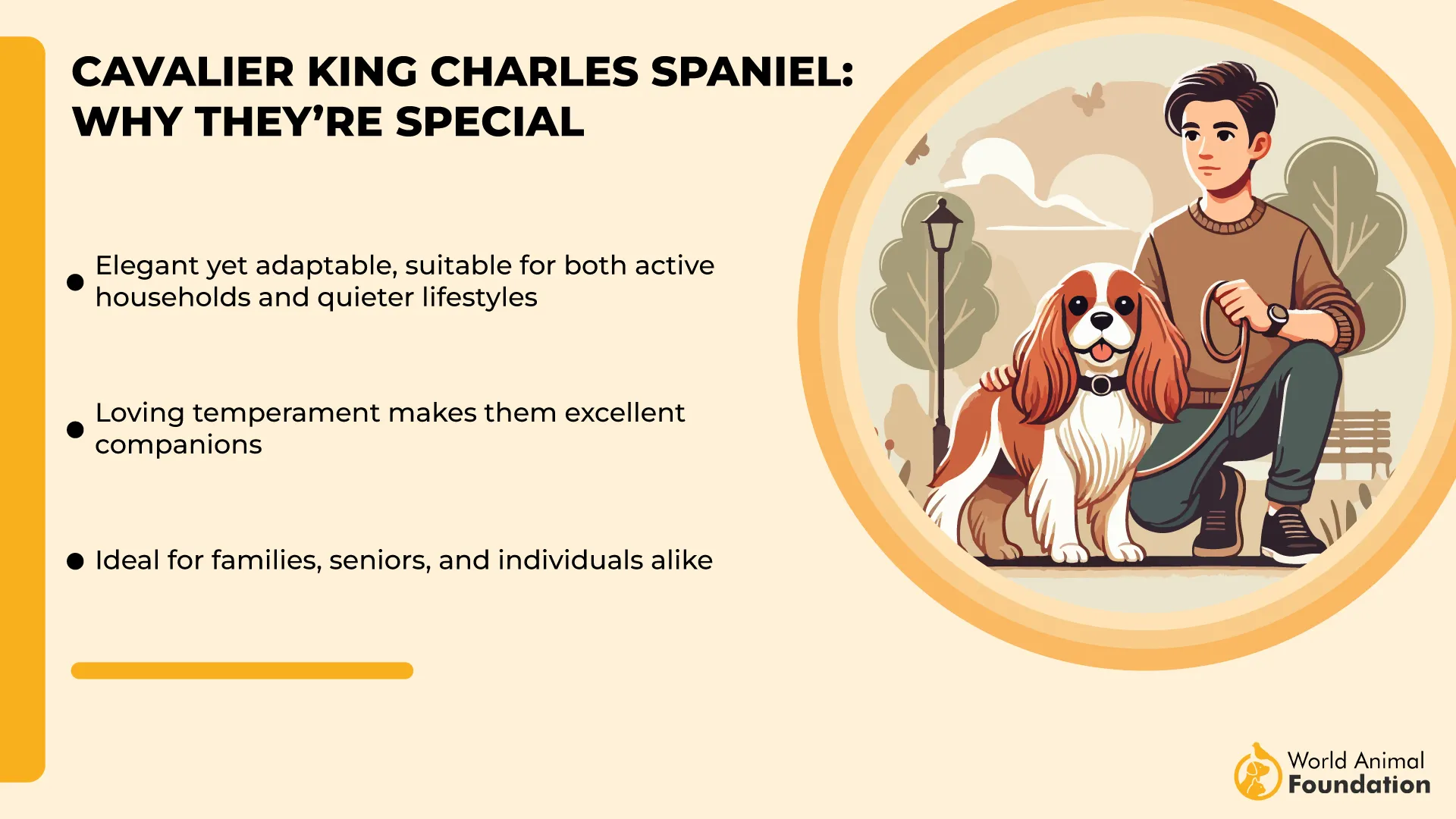
When it comes to cognitive abilities, Cavaliers are surprisingly sharp for such a small dog. They may not be solving puzzles in a jiffy, but they’re quick learners when it comes to understanding the rhythms of their human. This breed loves interaction, so a few training sessions sprinkled with playtime is all it takes for them to grasp the basics.
These dogs thrive on companionship, which is why they love being in the same room as their family members. They’re incredibly intuitive, able to tell when you’re in a good mood or need some comfort. Unlike other individual dog breeds that might prefer personal space, the Cavalier will be right there, soaking up all the attention.
Small but mighty, Cavaliers pack a big heart into a tiny body. They’re always ready for an adventure, whether it’s a stroll in the park or just lounging on the couch. Despite their compact size, they bring an energy that feels larger than life, making them the perfect companion for those who enjoy life on the go.
Grooming a Cavalier is pretty straightforward, but their silky coat does need a little TLC. Brushing a few times a week ensures they’re looking dapper and feeling comfortable. They don’t require extensive upkeep like some other breeds, but they do appreciate the attention that comes with their upkeep. With the right care, they’ll be your regal little buddy.
3. Shih Tzu
Shih Tzus are like little bundles of joy wrapped in fluffy fur. They’re not just friendly; they have a unique way of making you feel special by simply existing in your space. Their charm lies in their persistent desire to stay close, always ready for a snuggle, which makes them wonderful companions.
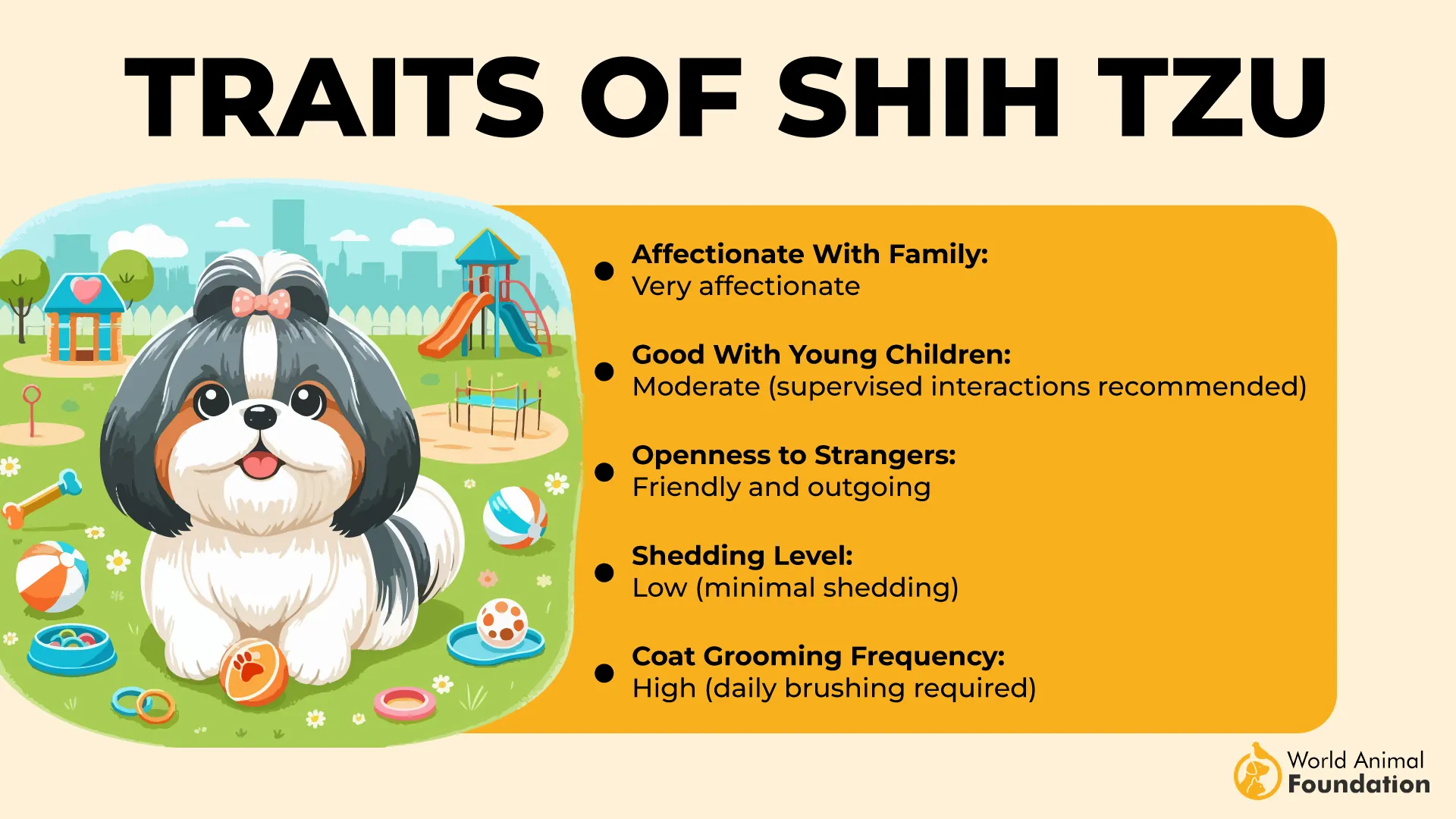
When it comes to problem-solving, Shih Tzus prefer to take their time figuring things out, often using their wits to get what they want. Unlike certain breeds that rush to conclusions, they approach challenges slowly but surely, showing a quiet intelligence that’s both endearing and effective.
Despite their small stature, Shih Tzus are curious little adventurers. They love to explore their surroundings but tend to be more laid-back than other dogs. Their cognitive differences make them unique in how they process the world, focusing more on comfort and curiosity than on intense activity.
Training a Shih Tzu requires a bit of patience, but they’re no slouches. While they may not be as eager to please as certain breeds, they’re quick learners when motivated, especially when training sessions are short and sweet. They appreciate positive reinforcement over strict commands.
Shih Tzu coats need regular brushing, and keeping them well-groomed is essential to maintain their majestic look, as per PDSA. Their luxurious fur can become a bit of a task if left unattended, but with regular care, they’re the picture of elegant ease.
4. Chinese Crested
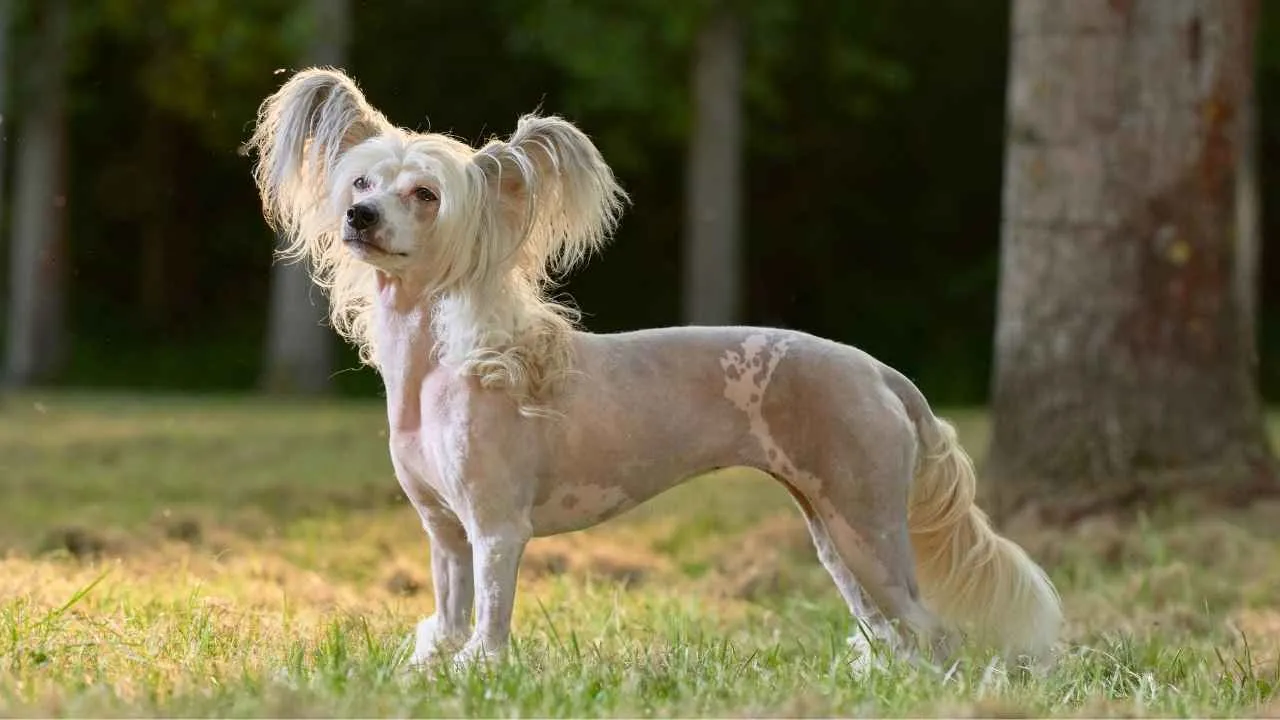
The Chinese Crested may not be a fluffy ball of fur, but its personality is certainly larger than life. Despite their unique appearance, their cognitive processes are surprisingly sharp, and they’re always quick to pick up on things around them, from the rustling of a snack bag to the arrival of a new guest.
When compared to other animals, Chinese Cresteds show significant differences in how they interact with their environment. They’re not overly hyper or demanding, but they’re keenly aware of their surroundings, and their playful curiosity keeps them active and engaged with their people.
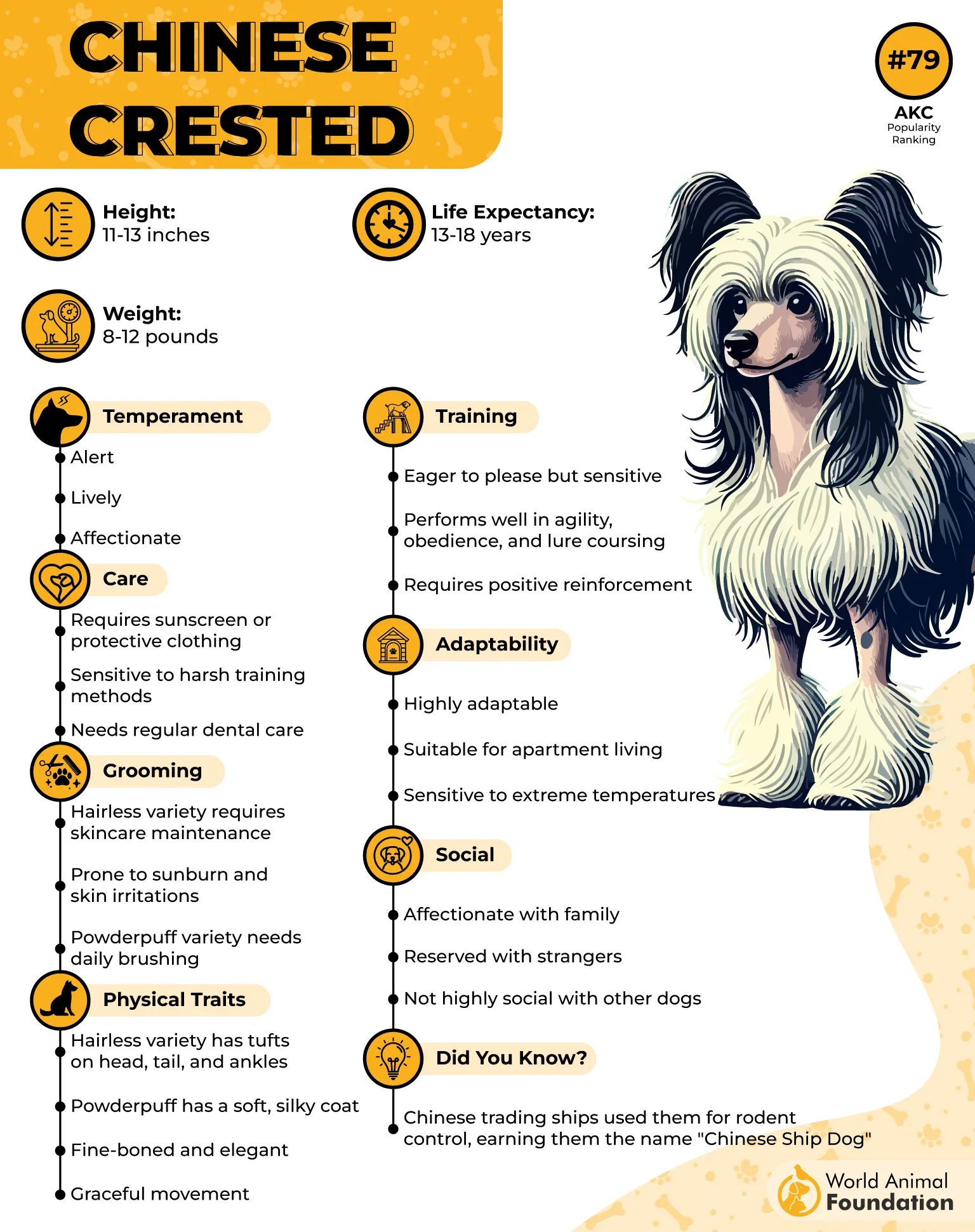
Training a Chinese Crested can be a rewarding experience, especially when using the right mix of patience and consistency. They’re certainly not the hardest dogs to train, as their cognitive tests show that with a bit of encouragement, they’ll quickly learn new tricks and commands.
These dogs thrive in environments where they can get the attention they crave, but they’re also quite content to spend time on their own when needed. Their ability to adapt to living with other animals depends on their socialization, but with the right approach, they fit into various family dynamics without too much trouble.
Chinese Cresteds may have a low-maintenance coat, but that doesn’t mean they’re low-maintenance in personality. Their quirky charm and thoughtful approach to life make them incredibly endearing to those who understand their unique qualities.
5. Maltese
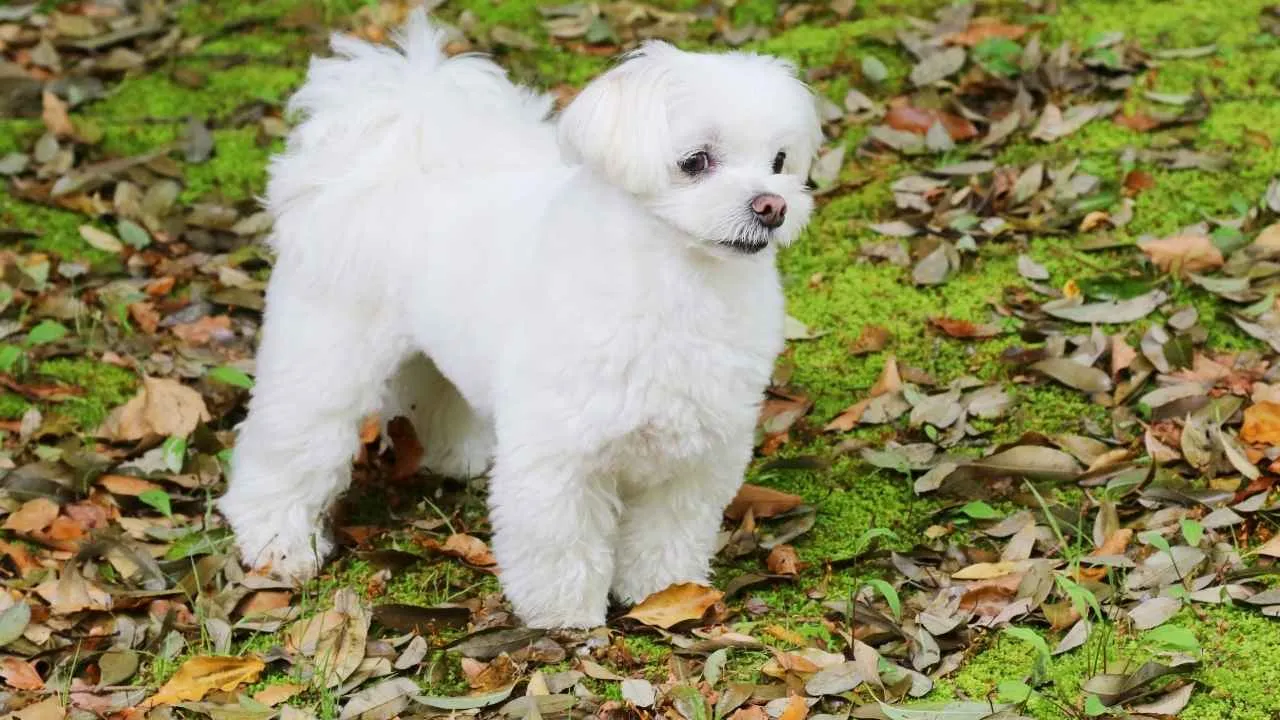
The Maltese, often small in stature, is a mighty dog in terms of personality and intelligence. Unlike other breeds, they possess a remarkable inhibitory control, meaning they tend to think before acting, avoiding impulsive behaviors and showing a well-balanced temperament.
Though small, these little dogs are adaptable and can handle life experiences with ease. Whether it’s a new person in the house or a move to a new environment, they adjust quickly and keep their calm, making them a perfect companion for many different breeds.
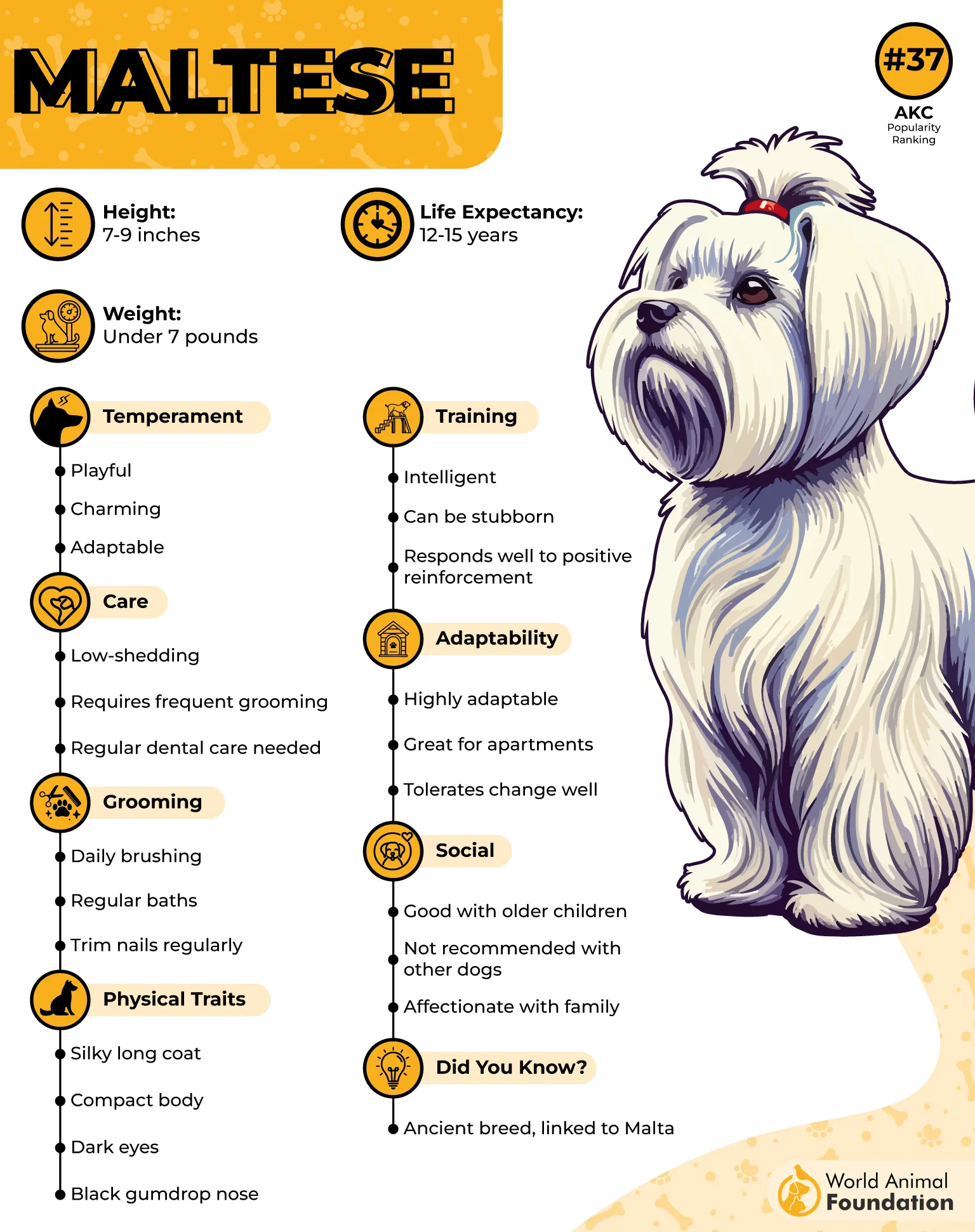
Training a Maltese is a joy, thanks to their quick learning abilities. They may not always face unsolvable tasks with complete patience, but they certainly give it their all and love solving challenges, making them clever little problem solvers when it counts.
Their bond with humans is undeniable. PetMD reports that Maltese dogs thrive in close-knit family environments where they can receive plenty of love and attention. Their affectionate nature makes them wonderful companions, always eager to be a part of whatever’s going on.
Despite their luxurious coats, they’re surprisingly low-maintenance when it comes to socializing. Once they’ve warmed up to a situation or person, they’re as friendly as can be, always ready for snuggles and to add their charm to any room they enter.
6. Clumber Spaniel
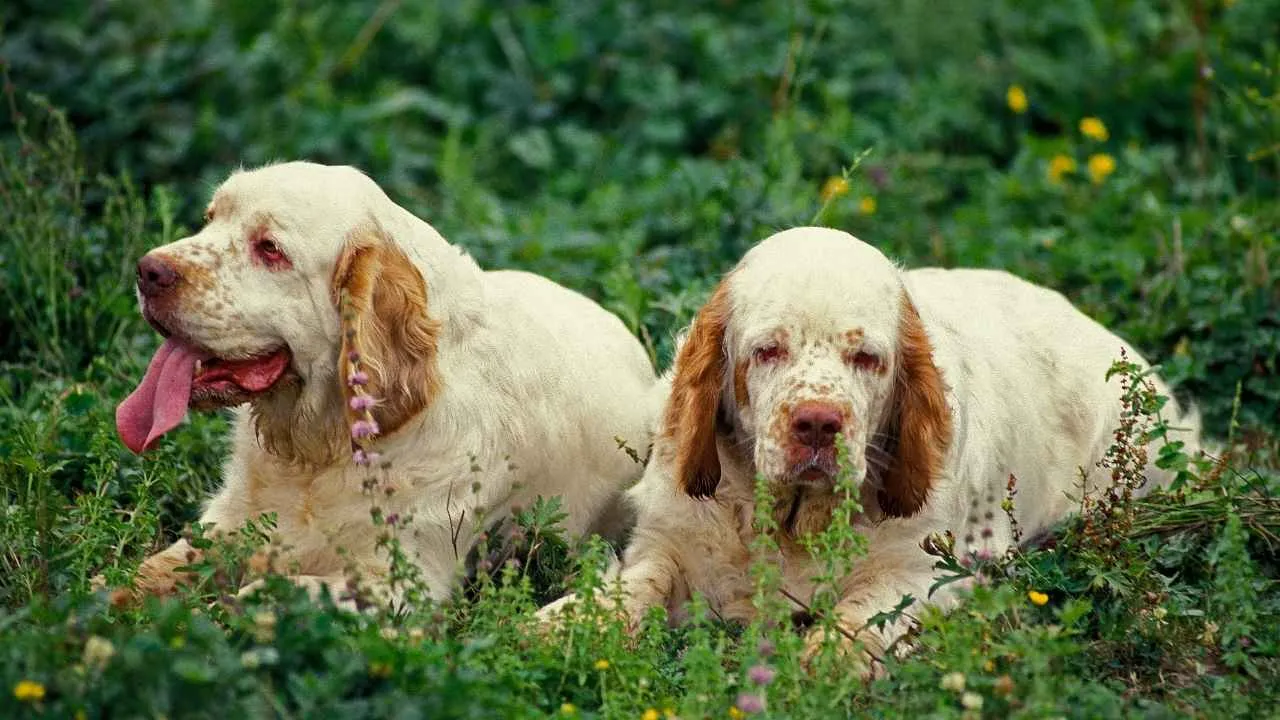
The Clumber Spaniel’s problem-solving abilities are quite impressive. They’re not the type to leap into action without thinking things through, which makes them perfect for tasks that require a bit of logical reasoning. Slow and steady wins the race, and this breed knows it!
Despite being one of the larger Spaniels, they possess a unique charm when it comes to their interactions with smaller breeds. Clumber Spaniels often show an understanding of space, making them great companions who can share their home without causing chaos in multi-pet households.
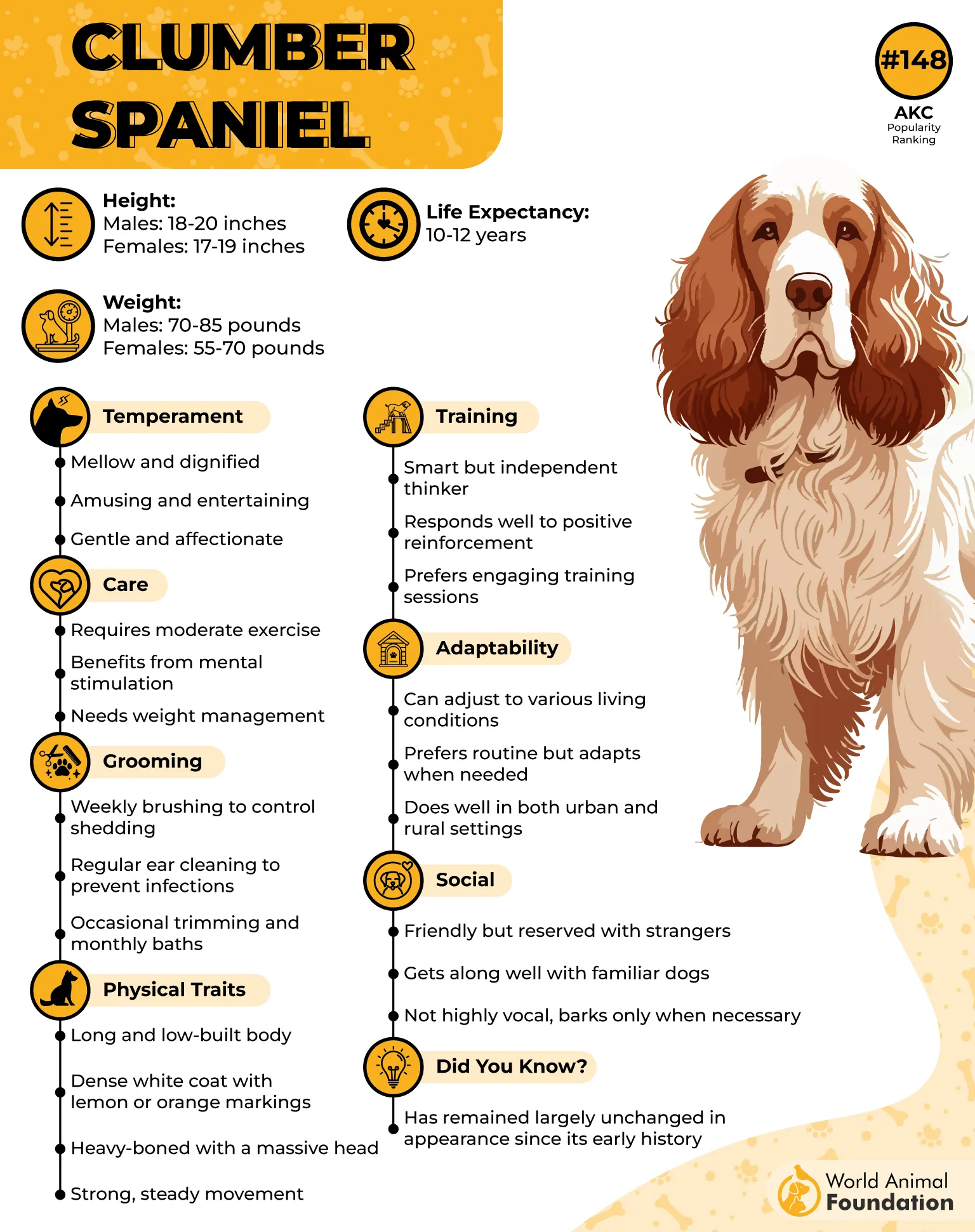
Clumbers are excellent at picking up on human gestures, especially when it comes to their owners. If you’ve got a treat or are signaling them to come inside, they’re quick to decode your signals, offering a bond that feels almost telepathic in nature.
Their social cognition is on point—Clumber Spaniels know how to navigate social situations. Whether meeting new people or spending time with their family, they’re able to read social cues and adapt, making them delightful companions at gatherings.
Don’t be fooled by their gentle demeanor; the Clumber Spaniel is one breed that loves to do things their own way. They’re independent thinkers, not always eager to follow the crowd, but when they do engage, it’s with full-hearted enthusiasm.
7. Japanese Chin
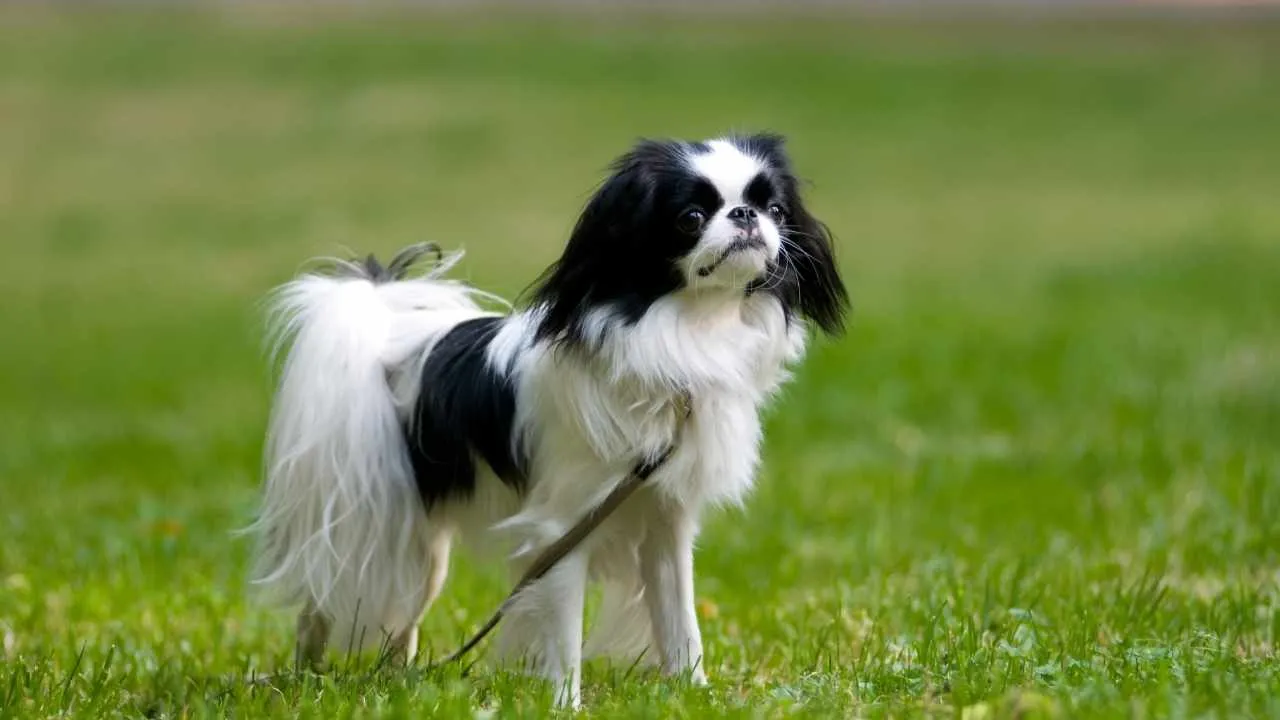
When it comes to problem-solving skills, the Japanese Chin shines in its own unique way. While they might not leap into action immediately, they take their time to figure out solutions, perfect for situations that require a bit of finesse and patience.
Not all dogs are alike, and the Japanese Chin is a great example of different traits within the same canine family. With a calm demeanor and strong sense of independence, they’re not just cute fluffballs—they also know how to navigate the world around them with grace.
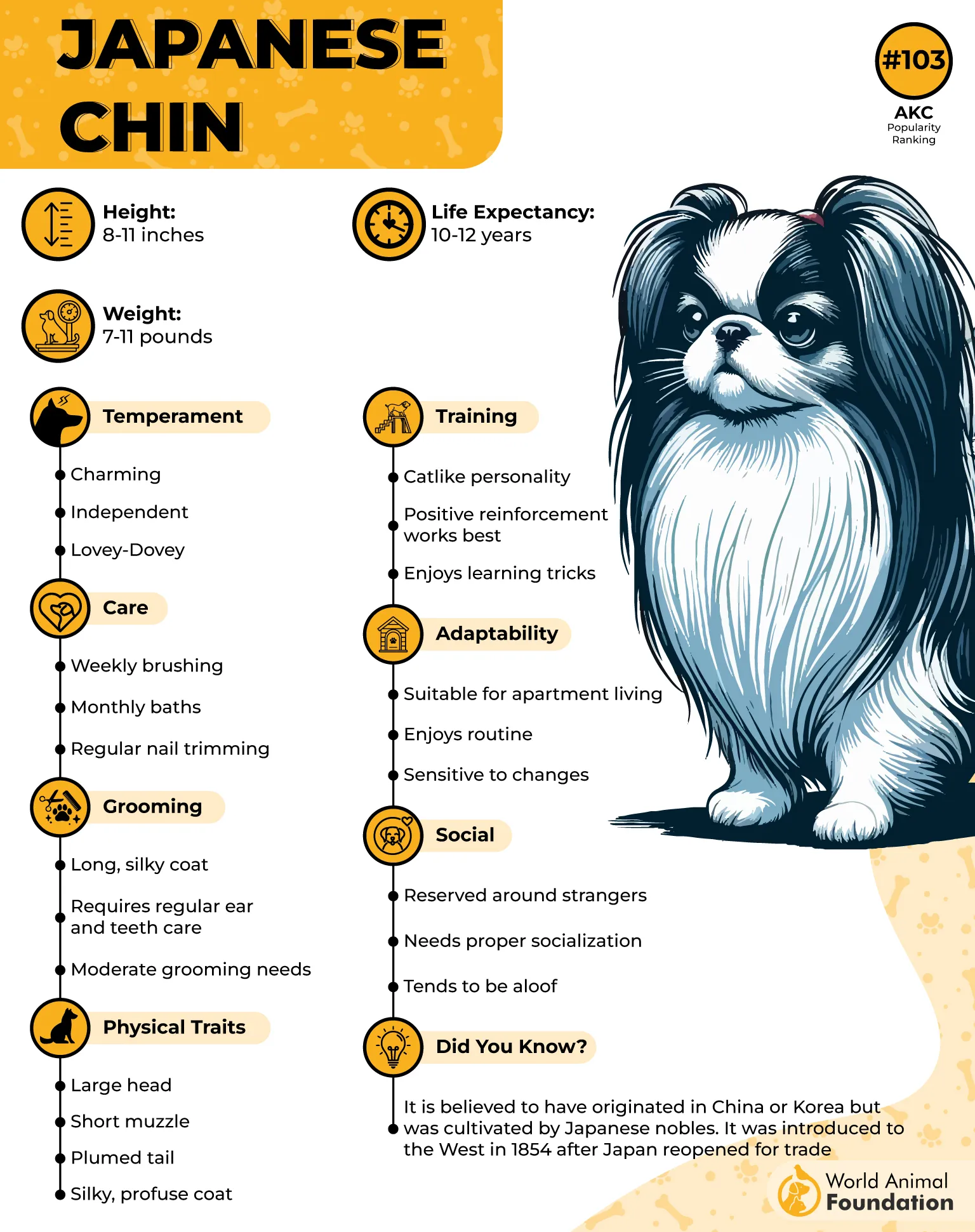
Unlike many other canines, this dog has a knack for dealing with specific breeds with ease. Whether it’s mingling with other pets or adjusting to new environments, the Japanese Chin’s gentle and adaptable nature helps them stand out in any crowd.
Their cleverness extends beyond basic tasks—they’ve got a way of understanding their humans like no other pet. The Japanese Chin is quick to sense moods and actions, making it an intuitive companion who will always keep you on your toes.
Though small in size, the Japanese Chin’s big personality is impossible to ignore. With an air of elegance, they can command attention without even trying, showing how much impact a small dog can have when they know how to make an impression.
Conclusion
When considering the most intelligent dog breeds, it’s clear that herding breeds often dominate due to their natural problem-solving skills and ability to think on their paws. Their impressive socio-cognitive abilities make them perfect for various roles, including being guide dogs.
Interestingly, mixed-breed dogs can exhibit just as much intelligence as highly intelligent breeds, especially when they’re bred for specific traits through selective breeding. These dogs bring together the best traits from different lines, showing us that great qualities can come from unexpected combinations.
Working dogs, with their ability to work independently, are a prime example of dogs bred to use their minds and muscles. Their spatial problem-solving ability is something that can be honed to perfection over generations, depending on their genetic predisposition.
Excessive barking is often a challenge with some breeds, but it’s interesting how herding breeds manage to stay focused despite their tendency to vocalize. Their sharp focus and ability to participate in work are what make them stand out in any crowd.
The skills we see in working dogs and other breeds like guide dogs are proof that dogs, no matter their type, have evolved to fill roles that benefit humans. From problem-solving to guiding the blind, these dogs prove they can work independently while also enhancing our lives.


